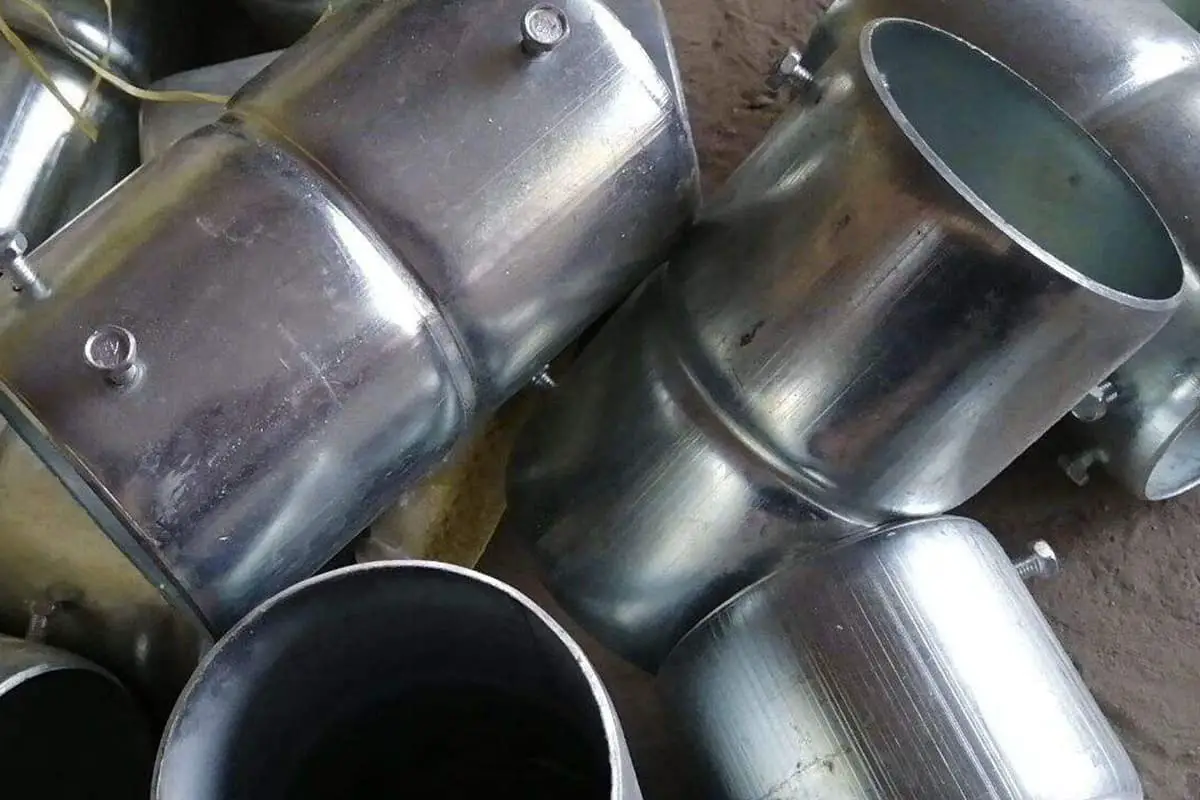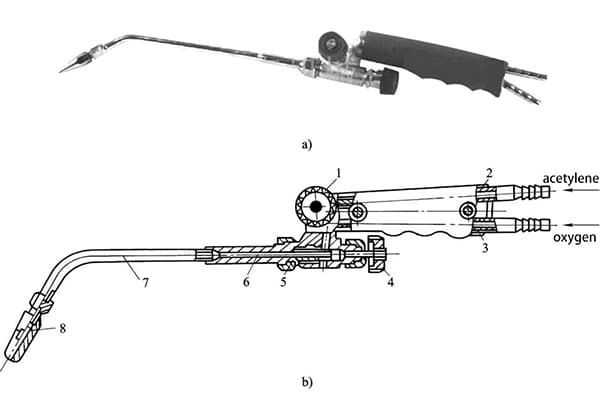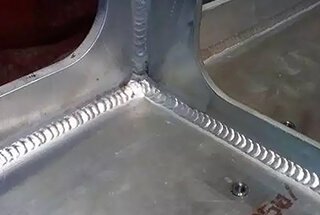
Have you ever considered the challenges of welding galvanized steel pipes? The zinc coating that protects these pipes also introduces issues like cracks, porosity, and slag inclusion during welding. This article explores various welding techniques and materials to tackle these challenges, ensuring strong and reliable welds. By understanding the right methods and precautions, you can improve the quality and durability of welded galvanized pipes, making them suitable for numerous industrial applications. Dive in to learn how to achieve high-quality welds while maintaining the integrity of the galvanized layer.

Galvanized steel is widely used across various industries due to the protective layer of zinc oxide it forms in the air, preserving the internal steel structure.
Despite its corrosion resistance, the presence of a galvanized layer can lead to cracks, porosity, and slag inclusion during welding, often resulting in inferior welding quality.

Typically, a layer of zinc, about 20um thick, is applied to the low-carbon steel. Zinc has a melting point of 419°C and a boiling point around 908°C. During welding, zinc melts into a liquid and floats on the surface of the welding pool or settles at the root of the weld seam.
Zinc, having a substantial solubility in iron, can seep into the weld metal along the grain boundaries, causing “liquid metal embrittlement”. At the same time, zinc and iron can form intermetallic brittle compounds, such as Fe3Zn10 and FeZn10, which reduce the plasticity of the weld metal and lead to cracking under tensile stress.
Welding fillet welds, especially T-joints, are particularly prone to cracking.
During the welding of galvanized steel, the zinc layer on the bevel and edge of the weld, under the action of arc heat, oxidizes, melts, evaporates and volatilizes, releasing white smoke and vapor, which can cause porosity in the weld.
The high melting point of ZnO, formed due to oxidation, around 1800°C or above, can lead to ZnO slag inclusions if welding parameters are too small.
Also, the creation of low melting point oxide slag compounds such as FeO-MnO or FeO-MnO-SiO2 can occur due to zinc’s role as a deoxidizer. Improper welding standards and techniques can lead to the expansion of the melting area, potentially damaging the galvanized layer.
This is especially likely during long arc and large swing operations. The evaporation of zinc produces a large amount of white smoke, which can be irritating and harmful to humans.
Therefore, using welding methods and materials that produce less smoke is a critical consideration.
Various welding methods are used for galvanized steel, including gas welding, manual metal arc welding, CO2 gas shielded welding, submerged arc automatic welding, and tungsten inert gas welding.
Gas welding, once commonly used for welding galvanized pipes, is now largely obsolete due to its non-concentrated heat input, which can lead to defects and poor mechanical performance of the weld. Gas welding causes significant damage to the galvanized layer.
CO2 gas shielded welding is favorable for welding galvanized steel. With the right welding specifications and matching protective gas and welding materials, high-quality weld joints can be obtained.
However, this method is seldom used in engineering practice.
Tungsten inert gas welding, with its concentrated arc energy, causes less damage to the galvanized layer and can easily form good single-sided weld double-sided formation joints.
However, its slower speed and higher cost make it a less attractive option.
Manual metal arc welding is the most commonly used method in pipe installation. With the correct choice of electrodes, such as J421, J422, J423, titanium oxide type and titanium calcium type electrodes are used.
These electrodes have a high melting rate, which increases the melting speed. If operated without swing, only the galvanized layer at the edge of the weld pool will be damaged, generally not expanding the melting area, thus reducing the penetration of liquid zinc into the weld metal.
With the correct operating method and welding material, a good mechanical performance of the joint, free of defects, can be achieved.
Due to its lower cost and faster speed compared to tungsten inert gas welding, manual metal arc welding is adopted when skilled welders are available.
The pre-welding preparation for galvanized steel is the same as that for general low-carbon steel. Careful attention needs to be paid to the bevel size and nearby galvanized layer.
To ensure full penetration, the bevel size should be appropriate, generally 60~65°, with a certain gap, usually 1.5~2.5mm. To reduce zinc penetration into the weld, the galvanized layer inside the bevel can be cleaned before welding.
In actual work, a centralized beveling process without leaving a blunt edge is adopted for centralized control, and a two-layer welding process is used to reduce the possibility of incomplete fusion.
The electrode should be chosen based on the base material of the galvanized pipe. For general low-carbon steel, J422 is commonly chosen due to its easy operability.
Welding technique:
When welding the first layer of multi-layer welds, try to melt the zinc layer and allow it to vaporize and evaporate out of the weld, which can greatly reduce the amount of liquid zinc left in the weld.
When welding fillet welds, try to melt the zinc layer and allow it to vaporize and evaporate out of the weld in the first layer. This is done by first moving the electrode tip forward by about 5~7mm, melting the zinc layer, and then returning to the original position to continue welding.
After welding, it is necessary to clean the weld seam promptly, brush with zinc-rich primer, and implement corrosion protection measures.
Control is implemented in five aspects: personnel, materials, machines, methods, and environment.
① The personnel factor is the focus of welding control:
Therefore, before welding, welders who are technically proficient and possess welding certificates should be selected for necessary technical training and briefing. No random replacements are allowed to ensure the stability of the welding personnel for the pipeline.
② Control of welding materials:
Ensure that the purchased materials are from regular channels, with quality assurance, certificates of conformity, and meet process requirements; the control of recycled welding rod heads is strict to ensure flow and usage; welding materials must be baked strictly according to the process, and the amount issued at one time should not exceed half a day’s usage.
③ Welding machines:
Welding machines must be reliable and meet process requirements; welding machines must have calibrated current and voltage meters to ensure the correct implementation of the welding process. Welding cables cannot be too long, and welding parameters should be adjusted when they are long.
④ Welding process methods:
Ensure the strict implementation of special operating methods for galvanized pipes, pre-welding groove inspection of the welding process, control of welding process parameters and operating techniques, post-welding appearance quality inspection, and additional non-destructive testing after welding if necessary. Control the welding levels and the amount of welding material for each joint.
⑤ Welding environment control:
Ensure that the temperature, humidity, and wind speed during welding comply with process requirements.
The welding of hot-dip galvanized pipes in construction adopts the correct welding process, strictly checks and accepts according to the specifications, and promptly performs anti-corrosion treatment (rich zinc paint) on the weld after welding.
It has certain feasibility in the process of open and closed system air conditioning construction, which can increase the construction speed and improve the firmness of pipe connections.
Therefore, under permissible construction conditions, and with the premise of implementing relevant protective and anti-corrosion measures, hot-dip galvanized pipes can be welded together.








